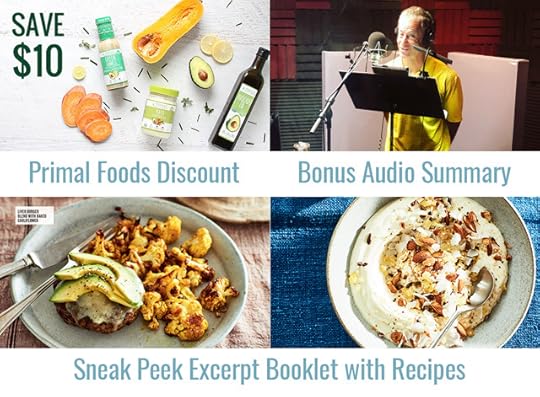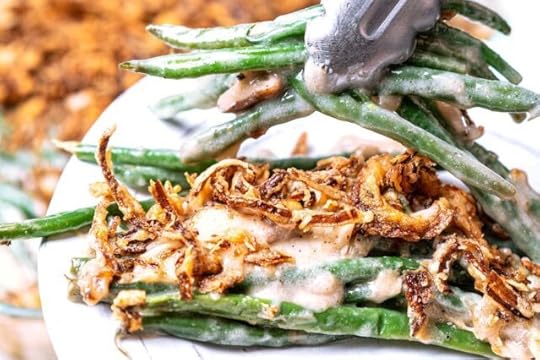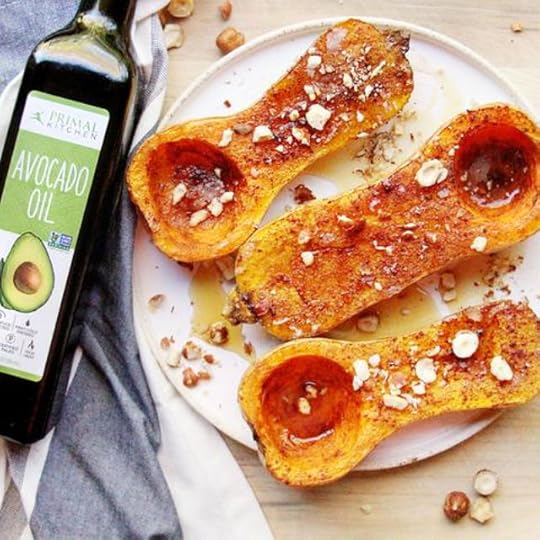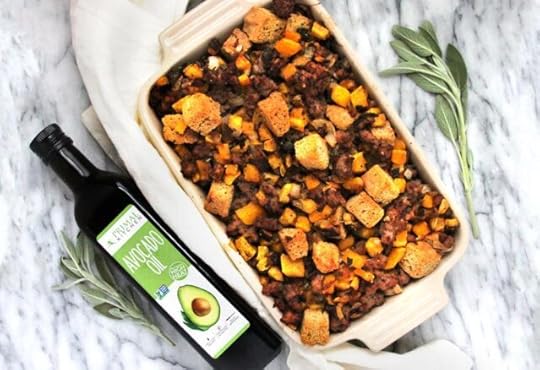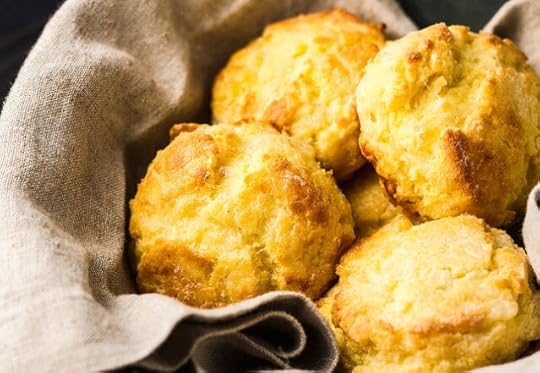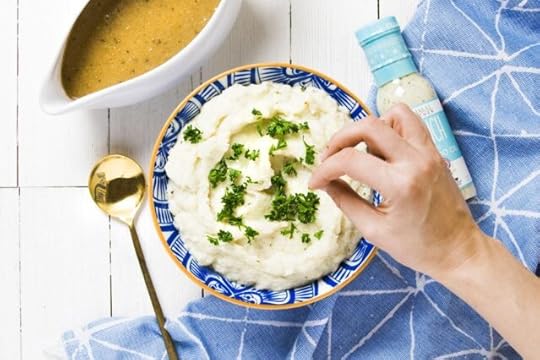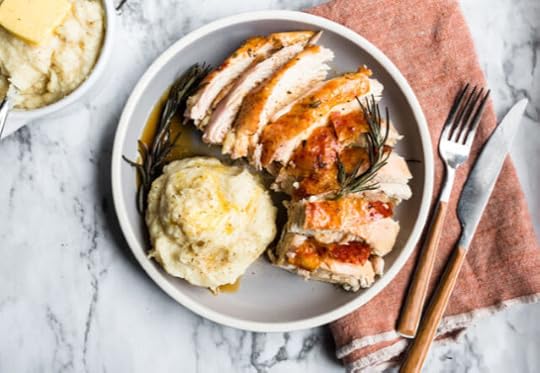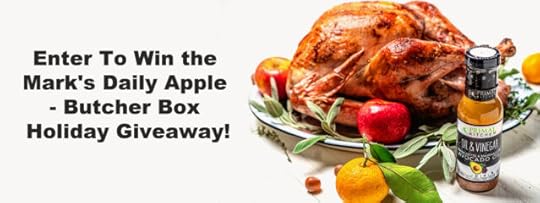Mark Sisson's Blog, page 89
November 20, 2019
What We Get Wrong About Childhood Obesity
 Weight Watchers (recently rebranded to WW) put out an app for kids and teens who want to lose weight a few months ago. It’s called Kurbo, and it assigns “traffic light” color codes to different foods. Green foods like fruits and vegetables can be eaten freely, yellow foods like low-fat dairy, lean meat, and bread can be eaten in moderation, and red foods like full-fat dairy and sweets should be eaten sparingly or “planned for.” Kids under 13 need to sign up with a parent, while older kids can sign up on their own. Online coaching is available for an extra fee. Users are urged to track their food intake and body weight, even if they choose a goal like “Have more energy.”
Weight Watchers (recently rebranded to WW) put out an app for kids and teens who want to lose weight a few months ago. It’s called Kurbo, and it assigns “traffic light” color codes to different foods. Green foods like fruits and vegetables can be eaten freely, yellow foods like low-fat dairy, lean meat, and bread can be eaten in moderation, and red foods like full-fat dairy and sweets should be eaten sparingly or “planned for.” Kids under 13 need to sign up with a parent, while older kids can sign up on their own. Online coaching is available for an extra fee. Users are urged to track their food intake and body weight, even if they choose a goal like “Have more energy.”
Critics hit back. The Atlantic claimed that using apps like Kurbo won’t make a difference for the kids who need it most—those living in “food deserts,” those exposed to junk food marketing, those whose parents can’t afford healthy food and haven’t the time to fix healthy meals. Outside Online warned against the potential for Kurbo to create unhealthy fixations on food and “clean eating” in kids, setting the stage for eating disorders that can increase the risk of mortality, depression, and anxiety later in life. They called for an overhaul of “food policy” instead.
It’s wrong. They’re all wrong.
The childhood obesity epidemic isn’t a single, double, or even triple-issue problem.
It’s not caused by a lack of green light foods and a surfeit of red light foods.
It’s not caused by food deserts either. Unfortunately, introducing grocery stores full of fruits and vegetables into “food deserts” always fails on the macro level at least: not enough people end up buying the food.
It’s not caused by a lack of “food policy.” Official governmental food policies are arguably what helped get us into this mess.
Outside Online mentions an “overhaul of culture.” That’s closer to the mark, but it’s probably not broad enough.
Childhood obesity is far more multifactorial than people are willing to acknowledge. People give lip service to multifactoriality. When they say “childhood obesity is multifactorial” or “we need an overhaul of culture” they’re really just talking about calorie intake and recess cutbacks at school (although neither of these help matters).
In reality, childhood obesity has dozens of causes. You can’t fix one or two things and fix the problem. You have to fix the entire structure of modern society. All the things we talk about on here—the sleep, the industrial seed oils, the sedentary living, the light at night, the excess carbs, the inadequate strength training, the overreliance on “cardio”—also affect children.
But changing “food policy” won’t do it. Nothing “top down” will accomplish it, because society is made up of individuals and families. Change must start down there, not at the top.
I read a dozen research studies every week suggesting some new and simplistic answer to the child obesity issue.
Prebiotics reduce childhood weight gain? Great. Does that mean prebiotic powder in the water fountains is the fix? That might help, but we have to go deeper. Prebiotic supplementation helps because children are designed to eat foods that contain prebiotics. You could just give the isolated prebiotic on top of their refined diet for half the benefit, but it’s more effective and provides more micronutrients when you let kids eat whole foods that contain prebiotics instead of refined foods bereft of them.
Oxytocin reduces the desire for rewarding junk food? Great. Does that mean we should mix oxytocin into their milk bottles? Give your kids MDMA microdoses? No. Instead, spend close physical time together as a family. Hug your children. Wear your babies—go skin to skin. Do the normal, everyday human things that promote oxytocin secretion.
Oh, it’s not food deserts but food swamps—an overabundance of fast food joints and food marketing—causing the obesity epidemic in kids of lower socioeconomic status? Now we’re getting somewhere. But does that mean we should lobby government to force fast food restaurants to close up shop and stop advertising? That’ll never happen. What actually works is turning off T.V. commercials, limiting exposure to marketing, and saying “no.”
You see what’s going on here? Local decisions are the only way forward. You can say “no.” You can hug your kids more. You decide what to buy at the grocery store and make for dinner.
The crux of the issue is that if we want to fix childhood obesity we have to fix ourselves. We have to change how we, as parents, eat, move, spend our free time, consume media, interact with our kids. We can’t expect our kids to eat good food if we’re not. We can’t expect our kids to refrain from digital device addiction if we’re logging eight hours a day. We can’t tell our kids to read books and play outdoors if we’re glued to our screens and bingeing Netflix.
It’s not easy. Few things that are worthwhile are easy. But here’s the secret to all this stuff: It’s way, way better than what you were doing before. It’s more fun and more rewarding. We just have to get over that hump of complacency, of habit, of resistance—and then we’re home free. You know how you’re always happy you forced yourself to go to the gym? How not only are you happy having worked out, but you enjoy the actual workout itself in the moment. That applies to everything else that’s good for you. Getting out the board game and corralling the kids is worth it. Family game night is better than everyone zoning out or hanging around on devices separate and together. On every level, it’s better.
It’s easy to despair. The world is unfair and set up for kids to get fat. They shouldn’t have to think about what they eat. The idea of a weight loss app for kids shouldn’t even enter a developer’s mind.
They shouldn’t have a dozen varieties of gluten-free cereal to choose from. Their milk shouldn’t be skimmed, their chicken shouldn’t come in finger form, their days should be full of rambunctious play and exploration.
They shouldn’t have to think about food at all. They should simply eat the food that’s available, and the food that’s available should be nutrient-dense and unrefined.
The problem, you say, is that we don’t live in that world anymore. We can create little islands of ancient nutrition in our homes, but they aren’t impermeable. Your kids will go to school, go to parties, go to friends’ houses. And they’ll realize that the small world they live in isn’t “normal.” They’ll get exposed to candy and video games and everything else that increases the risk of obesity. And they’ll probably bug you about it. They might even whine.
So what? Hold fast.
None of these other solutions are going to work. Not the apps, not the public policy. Societal change for something this personal can’t happen from the top down.
Real change happens around the dinner table. It happens when the heads of the family decide to make the change happen at the hyper-local level—the only one they can hope to control.
Oh, so what about everyone else, you might be asking? How can I guarantee that my neighbors and the other parents are my kids’ school are doing the same thing? Or those unfortunate kids on the other side of town? Or the impoverished ones in that other country?
You can’t. That’s how it works. You can’t control it. And once you allow the experts to start dictating how everyone else eats and lives, you’ve lost. You won’t like what they come up with. No government official will ever advocate or enforce the kind of diet we believe in. The best hope you’d have is for a Primal Caesar to cross the Pepsi Rubicon and wrest control of the government from the corrupt bureaucrats and establish a Primal regime. I’m too busy for that.
As a final note, a word on dieting in kids. I may take flack from readers for this one, but so be it. Kids shouldn’t be “put on” specific diets. Don’t make them go keto or carnivore or (especially) vegan.
Look: if your kid only wants to eat eggs and bacon and steak and full-fat milk, awesome. Don’t force your kid to eat anything in either direction (but keep it available—because their whims change quickly and thankfully). And if your kid is dairy-intolerant, don’t give them cheese. But if your kid likes potatoes and berries and bananas, those are completely legitimate foods for a growing human to consume. I just can’t advise restricting any whole Primal-friendly foods on the basis of macronutrient ratios. Kids are in constant go mode. They’re running and moving everywhere. They’re laying down new tissue at an astonishing rate. They may even still be building brain tissue, depending on their age. Stay away from the aberrant foods like industrial seed oils and massive amounts of refined grains. Sugar should simply be kept out of the house, out of reach. Provide healthy vegetation even if they’ll only eat 2-3 things in that category, give some animal foods at every meal, and don’t worry about carbs or fat.
If everyone did that, we wouldn’t have an obesity epidemic in kids. Thankfully, you can choose to do that. Right here, right today.
And that’s good enough.
What about you folks? What do you think about childhood obesity? What can we do about it? What should we do about it? Do you agree with my stance?
Let me know down below, and thanks for reading!

The post What We Get Wrong About Childhood Obesity appeared first on Mark's Daily Apple.



November 19, 2019
Introducing Keto For Life: Leveraging Metabolic Flexibility To Pursue The Ultimate Goal of Longevity
 Today I’m overjoyed to announce the release of my latest, greatest, and certainly broadest attempt at a comprehensive plan to live long and live awesome: Keto For Life. The book’s official on-sale date is December 31, and—as tradition goes on Mark’s Daily Apple—I’m offering an incredible group of free bonus materials as a pre-order gift. Here’s a link where you can access your favorite online retailers to order, but know you can also visit your favorite brick and mortar bookstore to pre-order, too.
Today I’m overjoyed to announce the release of my latest, greatest, and certainly broadest attempt at a comprehensive plan to live long and live awesome: Keto For Life. The book’s official on-sale date is December 31, and—as tradition goes on Mark’s Daily Apple—I’m offering an incredible group of free bonus materials as a pre-order gift. Here’s a link where you can access your favorite online retailers to order, but know you can also visit your favorite brick and mortar bookstore to pre-order, too.
Folks, I know many of you have been here with me and the MDA community for enough years to remember how this all began with the Primal Blueprint. It’s been such an awesome journey—and one that keeps evolving in incredible ways. I genuinely feel like it’s all been leading toward this one. I’ve poured my personal experimentation and hard-gained insight into every book I’ve written, but this one feels, well, like a whole new level of inquiry and practice. Keto has kicked off not just a dietary trend the last few years but truly a whole new realm of scientific research. I’ve been knee-deep in it in writing this book, and I’ve not only delved into these revolutionary findings but have also taken the integration of keto science and Primal lifestyle principles to an entire new level. Let me tell you about it….
?
With ground-breaking connections for how keto and Primal principles can literally reset your biological clock, Keto For Life is a revolutionary gateway into eating and living for increased longevity and resilient vitality. With endless how-tos in every chapter, a 21-Day Biological Reset plan with multiple holistic lifestyle prompts for each and every day, and more than 80 delicious keto recipes, it’s a deeply comprehensive and fully actionable resource for living Keto For Life—and all it’s meant to be.
Longevity is about much more than just healthy eating. However, oftentimes when you’re stuck in the disease state of carbohydrate dependency, you might as well forget about other lifestyle strategies until you can escape that certain destiny of pain, suffering, accelerated aging and disease. If you’re an ancestral health enthusiast, you likely realize the amazing health awakening that comes when you upregulate your fat burning genes and get off the carb dependency train. Favorable blood test values, dropping excess body fat, and escaping the common problems of energy, mood and appetite swings are indications that your metabolic flexibility is robust. While Keto For Life dutifully cleans up some of the misconceptions, hype, and misinformation that have come with the explosive popularity of keto, I’m expanding the entire picture into “Four Pillars of Longevity.”
I’ll give you a little teaser today about each section so you’ll be eager to dive right in when your book arrives! In the Introduction, you’ll learn how hectic, high-tech modern life is becoming more and more at odds with longevity, especially the hidden costs of hyperconnectivity, destruction of meaningful social connections, and forces like consumerism, flawed and manipulative marketing messages relating to diet and medical care, and even the fitness industry’s obsession with struggle and suffer instead of a more sensible approach to exercise. You’ll learn perspective-altering insights about our actual healthspan as well as intriguing multi-plane views of aging that will revamp the way you look at your later decades—and the journey leading to them.
A new perspective shows us that aging as we know it isn’t a normal and inevitable result of chronology but actually what Dr. Art DeVany describes as “the unrepaired accumulation of routine cellular damage… a loss of cell function, loss of cell integrity, loss of the ability of stem cells to renew tissues.” Embracing this truth, you can take tremendous control over the rate at which you experience decline, instead appreciating and optimizing the variety of human “peaks” we can achieve and harness throughout our lifespans. Chronology has far less to say than we’ve given it credit for.
Pillar #1: Metabolic Flexibility
This is the best catch-all term to convey the magnificent journey of escaping carbohydrate dependency and becoming a fat-burning beast. Literally, metabolic flexibility describes the ability to burn a variety of fuel sources—not just external ingested calories, but also internal sources such as stored fat, stored glycogen and ketones manufactured in the liver as a byproduct of fat metabolism—when carb intake is low. At the highest level of sophistication, you become a “closed loop system” that can survive and even thrive without needing the constant intake of external calories and certainly without needing to adhere to any regimented macronutrient eating patterns.
In this pillar, you’ll reacquaint with the importance of a comfortable, minimally stressful step-by-step process to escape carb dependency and progress toward metabolic flexibility. As detailed in the Keto Reset Diet, you’ll execute a 21-Day Metabolism Reset, a fine-tuning period, and a 6-week nutritional ketosis period. We’ll discuss some advanced strategies for fasting and eating in a compressed time window, particularly the importance of limiting your digestive function to 12 hours. You’ll get guidance on integrating the hottest longevity superfoods and supplements, as well as help sorting through the weight loss hype around them and pinpointing the best ways to use these products.
You’ll learn some of the best long-term keto strategies, including living in what I call the “Keto Zone,” where you eat in a general keto-aligned pattern without stressing about macros, as well as incorporating days or periods where carb intake might increase beyond keto limits without you stressing about it. You’ll also learn what NOT to do with various popular keto strategies that are ill advised or overhyped, including (but not limited to) the ridiculousness of dirty keto, obsessive weekend refeeds, and cheat days.
Pillar #2: Movement and Physical Fitness
Movement and physical fitness are two distinct concepts. Together, along with preserving sharp cognition, they represent the essence of aging gracefully. In contrast, when we lose cognition and mobility, our life expectancy and quality of life plummet as we are relegated to wheelchairs, beds, and medications that limit our physical freedoms and compromise our mental well-being.
The desperate obligation to increase all forms of general everyday movement can be best handled by JFW—Just F—ing Walk! Today, many fitness and health experts assert that simply moving around more (especially avoiding the prolonged periods of stillness that are so common in the digital age) has surpassed the importance of following a structured workout routine as the top priority to be fit for life. How can this be? Because moving around all day is one of our fundamental genetic expectations for health. Our genes crave movement and are averse to stillness. In as little as 20 minutes of sitting still, we can experience impaired glucose tolerance and acute insulin resistance, along with diminished cognitive function. When prolonged periods of stillness dominate your daily routine, it can cause chemical changes in the brain that promote further inactivity. This is quantified by a lower measurement of Non-Exercise Activity Thermogenesis (NEAT)—you burn fat less efficiently at rest and consequently crave more carbohydrates for energy.
Now, because modern life is so comfortable, we also have a desperate need for ambitious fitness endeavors like Spinning, CrossFit, or even completing a half-marathon, but these goals must be only contemplated after you have established a foundation of basic everyday movement, which I detail in the book.
Once your movement looks good, you can get into the genetically optimal workout pattern ala Primal Blueprint with a strategic blend of comfortably paced cardio, regular short duration, high intensity resistance workouts (weights, machines, or just bodyweight exercises like pushups), and occasional brief, all-out sprints (the ultimate Primal exercise to delay aging under the “use it or lose it” natural law.) Let’s also add what I call “play” endeavors that can feature each of the aforementioned. As you know from being a Primal enthusiast, there are massive hormonal and physiological benefits to be gained from putting your body under resistance load regularly, and opening up the throttle occasionally with all out efforts.
These activities, which have been almost completely neglected by most modern humans, give us a boost of adaptive, anti-aging hormones like human growth hormone and testosterone. Brief, intense efforts also help preserve muscle mass as you age, improving the critical longevity component of organ reserve. This is the functional capacity of your organs to perform above baseline level, one of the most fundamental ways to assess your state of health and longevity potential. This Primal approach to fitness is simple, time efficient, and within reach of everyone. It also gives you awesome protection against the accelerated demise associated with inactivity.
Unfortunately, many fitness enthusiasts follow an overly stressful approach that leads to breakdown, burnout, illness and injury. Chronic exercise leads to hormonal and immune dysfunction, and compromises metabolic flexibility—instead pushing you back in the direction of carbohydrate dependency. You’ll learn how to schedule and conduct the various workouts correctly, avoid chronic patterns, and apply an intuitive approach instead of a regimented approach to your fitness goals.
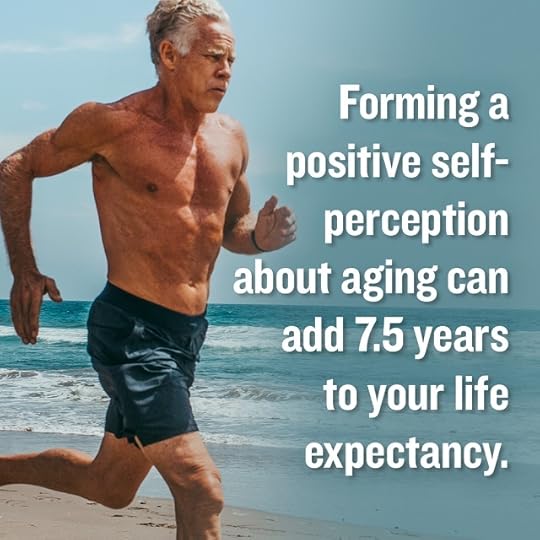
Pillar #3: Mental Flexibility
Mental flexibility makes you resilient for life in the same manner that metabolic flexibility makes you resilient enough to skip meals and maintain energy and focus. While looking after the physical vessel is essential, we must acknowledge the strength of the mind/body connection as previously discussed with the insights from Dr. Chopra and Dr. Lipton.
This section details numerous strategies to hone mental flexibility, starting with pivoting: going with the flow when facing life change. Pivoting entails knowing both when to persevere when your peak performance goals are aligned with your deep beliefs and calling to make the world a better place, and also recognizing when it’s time tone down the influence of your ego and quit when things don’t feel right in your gut.
You’ll learn how to avoid the disease state of ruminating, that is, the act of engaging in obsessive or destructive thoughts about the past or the future that cause you feel anxious, depressed, irritable, overwhelmed and downright sad. Instead, we can cultivate the esteemed skill of mindfulness—accessing a state of calm, present awareness through repetition and endurance.
Next, you’ll learn the importance of journaling, actually taking pen to paper and recording your thoughts, hopes, dreams and worries. Journaling can help you identify and correct self-limiting beliefs and behavior patterns. The specific practice of gratitude journaling, for example, has been scientifically validated to reduce stress levels, dissipate negative emotions, boost levels of the love hormone oxytocin, and activate calming parasympathetic nervous system function.
You’ll also read about learn to nurture meaningful, reciprocative interpersonal relationships—which might very well be the most powerful and important way to improve your longevity prospects in the entire book. Our genes are wired for connection, and the digital connections that are dominating modern life and coming at an extreme cost to our physical and psychological health. You’ll learn to cultivate a thriving social network, a smaller cluster of your closest family and friends, and place particular importance on the make or break health element of a loving partnership.
Pillar #4: Rest and Recovery
Optimizing your sleeping habits and environment will be the prominent focus here, but we must also consider a broad-based approach to chilling out amidst the hectic pace and constant stimulation of modern life. Strategies include disciplining your use of technology, taking frequent breaks from peak cognitive function to refresh depleted brain neurons, conducting recovery-centric workouts designed to promote relaxation and rejuvenation, and becoming competent at napping when cognitive function declines from afternoon blues. You’ll learn to pair mellow evening habits with a high energy morning routine (plenty of ideas included).
You’ll also turn your attention to proper recovery, both from fitness regimen and workplace overstimulation. You’ll learn about specially designed “Rebound Workouts” that can actually speed recovery in comparison to total rest by stimulating parasympathetic activity. And you’ll learn how to get better about focusing and prioritizing during the workday to avoid the dreaded cognitive middle gear, where you’re busy but ineffective. Finally, you’ll learn the importance of disconnecting on multiple levels to deliver profound hormonal and psychological benefits, stuff we have overlooked and disrespected with our warp speed technological progress.
21-Day Biological Clock Reset
After a comprehensive education and practical instruction about the 4 Pillars, it’s time for a transformative challenge: The 21-Day Biological Clock Reset. The reset features daily action items representing each of the Four Pillars. The journey, while short in duration, is designed to be highly focused and demanding. This is the only way to stimulate lasting lifestyle transformation and release you from the powerful pull of decades-old ingrained habits and powerful cultural forces pushing your out of a balance and stuck in carbohydrate dependency.
You’ll be exposed to a variety of strategies and concepts over the 21 days, and the idea is that you will pick and choose your favorites to integrate permanently into your lifestyle. You’ll be challenged to perform breakthrough workouts, increase daily activity, actually sit down and do stuff like a gratitude journal and create dark, mellow evenings instead of maximum screen time. It’s going to be fun, but it’s also going to be intensive, not to mention life-changing. Completing the Biological Clock Reset once a year is an excellent way to fine-tune your longevity muscles and clarify your focus amidst the constant distractions of modern life.
Recipes
But the food… Folks always want to know about the recipes. The 80+ Keto For Life recipes are a collaborative effort among numerous authors, coaches, chefs and well-known keto experts, including Dr. Cate Shanahan, Keris Marsden and Matt Whitmore of The Paleo Primer series, William Shewfelt of the carnivore diet movement, Dr. Lindsay Taylor and Layla McGowan, my co-authors on the Keto Reset Instant Pot Cookbook, Tania Teschke, author of The Bordeaux Kitchen, and more.
You’ll find everything you need for beginning, recommitting or reinvigorating your keto eating enjoyment with this diverse selection of dishes, from gourmet to quick and easy, from breakfast to beverages, snacks to side dishes and everything in between.
Let me share one today that might appeal….
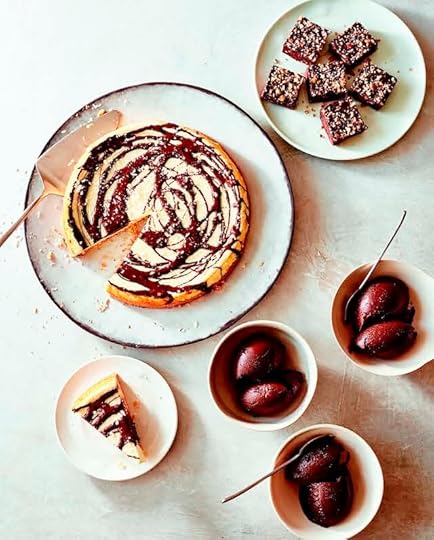
Sneak Peek Recipe: Keto Cheesecake
Prep Time: 40 minutes (plus refrigeration time)
Cook Time: 60 minutes
Servings: 8
Ingredients:
FOR THE FILLING
16 ounces (453.59 g) organic cream cheese, at room temperature
2 tablespoons pure vanilla extract
2 teaspoons fresh lemon juice
1 teaspoon sea salt
1 large egg
¼ cup powdered stevia or 1-2 tablespoons honey
FOR THE CRUST (OVEN METHOD ONLY)
1 cup (96 g) almond flour or 1 cup (128 g) coconut flour
4 tablespoons (60 g) butter, at room temperature
1–2 tablespoons powdered stevia
1 tablespoon pure vanilla extract
FOR THE CHOCOLATE CRUNCH TOPPING
¼ cup (34 g) macadamia nuts or assorted nuts
1 bar (3.5 ounces/100 g) dark chocolate (85% cacao or greater), broken into pieces
1 tablespoon coconut oil 2–3 tablespoons fine coconut flakes
Instructions:
Make the filling: In a large bowl, combine the cream cheese, vanilla, lemon juice, sea salt, eggs, and sweetener. Mix thoroughly with an electric mixer on low speed.
Choose between the Instant Pot Method and Oven Method and proceed as directed.
Instant Pot Method: Pour the filling into a round glass bowl or springform pan that can fit inside the Instant Pot. Cover the bowl carefully with foil. Pour 2 cups water into the Instant Pot. Place the cheesecake on the handled steam rack (or in a steamer basket accessory if you have one), and lower the cheesecake into the pot. Cook on High pressure for 25 minutes. When the Instant Pot beeps, allow the pressure to release naturally, about 15 minutes, then lift out the cheesecake.
Oven Method: Preheat the oven to 350°F (180°C).
Make the crust: In a bowl, combine the almond flour, butter, stevia, and vanilla until well blended. Press the mixture into the bottom of an 8-inch springform pan or round glass or ceramic baking dish.
Bake until the crust darkens slightly, about 10 minutes. Allow to cool for 10 minutes (leave the oven on). Pour the cheesecake filling mixture into the pan and smooth out the top with your hand (just kidding, use a spatula).
Bake until the middle is almost firm, but not quite, about 50 minutes. Allow to cool for 10 minutes.
While the cheesecake is cooling, make the chocolate crunch topping (use for either version): In a small food processor, blend the macadamia nuts until they resemble a crumbly flour. In a double boiler or a heatproof bowl set over a pan of simmering water, melt the chocolate and coconut oil. Mix the nuts and coconut flakes into the melted chocolate.
Drizzle the topping carefully across the top of the cooked and cooled cheesecake. Refrigerate the cheesecake until the crust feels hard, 30 minutes to 1 hour. Slice and serve.
Macronutrients Per Serving:
Instant Pot Method: 323 calories; 29 grams fat; 8 grams carbohydrate; 7 grams protein
Oven Method: 459 calories; 42 grams fat; 12 grams carbohydrate; 10 grams protein
Final Thoughts
I realize that there is an overwhelming amount of content hitting us today from books, magazine articles, blogs, podcasts, YouTube and streaming media, and it’s easy for a new book to get lost in the shuffle or buried on a “read later” list. That’s why I want to reiterate what a hugely expansive and life-changing this book Keto For Life represents. My longtime writing/publishing partner Brad Kearns and I joke that we always underestimate the difficulty and duration of a book project by half, and this was no exception. Keto For Life represents an intensive project that took an entire year to complete, with devoted efforts from a sizeable team of researchers, editors, agents, publicists and publisher. It’s designed to stand proudly for years to come as an owner’s manual for longevity. I hope it can help you claim your fullest and longest life.
Now For the Keto For Life Pre-Order Bonus Gifts…
This is always my favorite part. For those who order the book early, I have a few gifts for you (available right away even though the book itself comes out 12/31/19).
Bonus Audio Summary
Enjoy a detailed overview of every section of the book to get you excited and prepared to begin your Keto For Life journey. My co-author, Brad Kearns, describes the 4 Pillars in detail.
Sneak Peek Excerpt Booklet
Read some choice excerpts to give you a feel for the comprehensive nature of the book, where you obtain a deep education and scientific rationale for the 4 Pillars, as well as get practical, step-by-step guidance to implement, and (finally) enjoy a few of the delicious 80+ recipes from the book.
$10 Discount at Primal Kitchen®
Grab some of your favorite keto-friendly products to add variety and ease to your keto cooking ventures.
That’s what I got today, and I’m thrilled to offer it up to the community where it all began and where it’s still evolving. Folks, I hope you enjoy reading the book and putting it into practice as much as Brad and I enjoyed writing it. Thanks for being here.
Reprinted from KETO FOR LIFE by Mark Sisson with Brad Kearns. Copyright @ 2019 by Mark Sisson. Photos copyright @ 2019 Jennifer May. Published by Harmony Books, an imprint of Penguin Random House.

The post Introducing Keto For Life: Leveraging Metabolic Flexibility To Pursue The Ultimate Goal of Longevity appeared first on Mark's Daily Apple.



November 18, 2019
The Easiest Weight Loss I Have Experienced
It’s Monday, everyone! And that means another Primal Blueprint Real Life Story from a Mark’s Daily Apple reader. If you have your own success story and would like to share it with me and the Mark’s Daily Apple community please contact me here. I’ll continue to publish these each Monday as long as they keep coming in. Thank you for reading!

Yup, success stories are back! And I’m looking for more. Follow-ups, mid-progress reflections—every story at every stage has the potential to inspire folks out there who are getting started or contemplating a new beginning. Contact me here to share your story—long or not so long. You never know who you’ll impact by doing it. Enjoy, everyone!
I have been doing Obstacle Course races since 2013 and tried to keep myself active in training, but my diet was never really in alignment. I was the poster child to demonstrate that physical fitness is not the driving component in body composition in health—diet is. My heaviest was 188 lbs (5’9”), and I was always disappointed to see my race photos showing a fat belly and zero muscle definition.
In the summer of 2018, I ordered 21-Day Total Body Transformation, The Primal Blueprint, and Primal Endurance. I read all of them on my summer vacation and decided to really focus on my diet. I started by dropping bread, pasta, potatoes, rice and other standard “carbs.” I increased my protein, changed up my vegetables and added significant Keto recipes to my diet. I also eliminated alcohol. In terms of meals, I moved to IF, only eating between 12 and 8:30 PM.
AMAZING! Hunger went away! No “blood-sugar” drop, dull mind, “starving”…. There are many days I have to actually remember to eat. It has been the easiest weight loss I have ever experienced. In terms of fitness, I used the Maffetone method all fall and winter in my training, then kicked in to a twice weekly training group for trail running with a mid-July Ultra Marathon (North Vancouver’s North Shore Knee Knackering Trail Run) as my goal. The only time I didn’t use IF was when I had early morning training runs of over 2 hours. I ran the race with the goal of coming in “around” 7.5 hours. I came around the corner to the finish with the clock just ticking over 7 hours and 1 minute—talk about a re-alignment of goals! I laughed at myself as I was suddenly frustrated that I didn’t break 7 hours. The mind is a funny thing.
I absolutely love the Primal lifestyle and diet. It is EASY and the results are beyond anything I could have imagined. I am currently at 155 lbs with single digit body fat. My wife was so impressed with the results that she started as well and not only discovered a wheat allergy was the source of much of her inflammation, she also started dropping dress sizes in the most effortless way possible. She had previously lost weight, hit a plateau and watched it raise back up again. This time, it has not stopped. Her skin cleared-up, and she dropped multiple medications. Absolutely amazing.
Our biggest complaint with the program is that we have both had to completely redo our wardrobes as none of our clothes fit!
Brian Erb
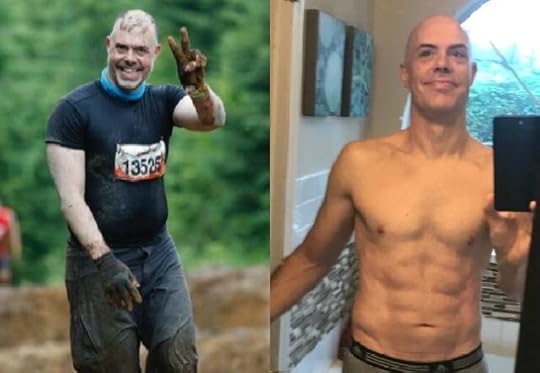

The post The Easiest Weight Loss I Have Experienced appeared first on Mark's Daily Apple.



November 17, 2019
13 Holiday Side Dishes (That Aren’t Potatoes)
 While there’s nothing particularly wrong with potatoes (in fact, we happen to love this recipe for scalloped potatoes), not everyone in the Primal—let alone keto—camp wants to serve potatoes at the holiday. They’re a technically Primal choice, but they’re decidedly high in carbs and not as high in nutrients as other options. Primal and Primal-keto eating shouldn’t be about deprivation—just thoughtful decision-making on what’s a good choice for you when it comes to holiday eating. Today we’ve got 13 delicious side dish recipes that stay true to the richness and flavors of traditional holiday cooking. Which ones will you be serving?
While there’s nothing particularly wrong with potatoes (in fact, we happen to love this recipe for scalloped potatoes), not everyone in the Primal—let alone keto—camp wants to serve potatoes at the holiday. They’re a technically Primal choice, but they’re decidedly high in carbs and not as high in nutrients as other options. Primal and Primal-keto eating shouldn’t be about deprivation—just thoughtful decision-making on what’s a good choice for you when it comes to holiday eating. Today we’ve got 13 delicious side dish recipes that stay true to the richness and flavors of traditional holiday cooking. Which ones will you be serving?
Green Bean Casserole
Maple Roasted Butternut Squash
Celery Root Soup
Spicy Squash and Sausage Stuffing
Shaved Brussels Sprouts Salad
Cranberry Sweet Potatoes
Cheesy Keto Biscuits
Ranch Cauliflower Mash
Garlic and Mushroom Soup
Harvest Salad Bowl
Mashed Parsnips
Keto Turkey Gravy
Warm Mushroom and Chard Salad
Tell us which are your favorite inspirations for your holiday table, or let us know what you’ll be serving up for the perfect Primal dinner. Thanks for reading.

The post 13 Holiday Side Dishes (That Aren’t Potatoes) appeared first on Mark's Daily Apple.



November 15, 2019
Weekly Link Love — Episode 55
 Research of the Week
Research of the WeekToxins produced by a specific gut bacteria make alcohol even worse for your liver.
To live longer, rest more (but earn that rest).
Keto improves the cognitive function of HIV patients.
Anti-inflammatories improve depression.
New Primal Blueprint Podcasts

Episode 389: Ginny Gane and Cassie Parks: Ginny Gane and Cassie Parks are experts in helping folks follow their calling, step into their future self, and maybe make some money.

Primal Health Coach Radio, Episode 34: Laura and Erin chat with Aaron Hinde about the power of long-term consistency.
Each week, select Mark’s Daily Apple blog posts are prepared as Primal Blueprint Podcasts. Need to catch up on reading, but don’t have the time? Prefer to listen to articles while on the go? Check out the new blog post podcasts below, and subscribe to the Primal Blueprint Podcast here so you never miss an episode.
Media, Schmedia
Generic insulin may be coming (hopefully fewer people will need it via diet, but for the time being…). (NYT)
Interesting Blog Posts
How are all those vegan athletes doing? I hadn’t realized that Djokovic went vegan; last I remember, he was gluten-free and pretty close to Primal.
Social Notes
Everything Else
I want to hire this man to cater a party sometime.
Exercise also reduces depression.
Things I’m Up to and Interested In
I wish I could have seen it in person: A giant half-ton orangutan ancestor used to roam the earth.
Article I found interesting: Why child labor beats school.
I wonder why: Some genes turn on after you die.
Study I found fascinating: How the Church’s ban on cousin marriage created modern Europe.
What do you think?: Is the existence of a billionaire immoral?
Question I’m Asking
What would a truly modern human look like?
Recipe Corner
Make matcha pudding for Thanksgiving.
Fish tagine with chermoula and preserved lemon, classic Americana.
Time Capsule
One year ago (Nov 9– Nov 15)
Holiday Eating: Considerations for Keto and Primal Types – What to keep in mind.
A Thanksgiving Menu for Everyone at the Table– How to make it work for everyone.
Comment of the Week
“What seems to work for me every time is garlic vodka. You can find some details on the internet but the basic preparation is following. Take a head of garlic, chop it finely, put it in a jar, pour 0,5 litre voda in the jar, let it be for 3 weeks shaking it twice a day and then filter garlic vodka discarding the garlic. Use just drops of it; they say 20 drops 3 times a day at most.”
– Interesting, Martin.

The post Weekly Link Love — Episode 55 appeared first on Mark's Daily Apple.



November 14, 2019
Dear Mark: Homocysteine, Some Kefir Questions, and the Stress of Worrying
 For today’s edition of Dear Mark, I’m answering a bunch of questions from readers. The first one concerns another inflammatory marker, homocysteine. How could CRP be low but homocysteine be high? What could cause that? Next, I answer a barrage of kefir questions, including ones on kefir carb counts, pasteurized kefir, and water and coconut kefir. Finally, I address the elephant in the room: stressing out about your diet.
For today’s edition of Dear Mark, I’m answering a bunch of questions from readers. The first one concerns another inflammatory marker, homocysteine. How could CRP be low but homocysteine be high? What could cause that? Next, I answer a barrage of kefir questions, including ones on kefir carb counts, pasteurized kefir, and water and coconut kefir. Finally, I address the elephant in the room: stressing out about your diet.
Let’s go:
How do Homocysteine levels figure in this equation? I have C-reactive protein under 1, but Homocysteine levels of 15, slightly high. Seems odd one so low and one a bit high.
Both indicate elevated inflammation, but they can have different causes. There are many nutrient deficiencies and interactions that go into elevated homocysteine levels—that’s why they indicate inflammation. What are they?
It all comes down to methionine. That’s the essential amino acid most abundant in muscle meats, the one most of you are getting a ton of if you’re eating a standard Primal, keto, or carnivore diet. We use it to perform cellular communication, regulate gene expression, repair cells, and build new tissue. It does some really important stuff, but it needs several different co-factors to work properly.
B12 and Folate—Vitamin B12 is a major one. So is folate. In fact, I lumped them together in one section because they are co-dependents. Vitamin B12 requires folate to do its job. Folate requires vitamin B12 to do its job. Both vitamins are necessary co-factors for methionine to do its important cellular work. Without either one, methionine builds up and contributes to homocysteine.
They even tested this in a controlled human trial. Giving a big dose of methionine without increasing B12 or folate increased homocysteine levels. Supplementing with B12 and folate protected against the methionine-induced increase in homocysteine.
Riboflavin—Some groups may need extra riboflavin to deal with homocysteine levels.
Glycine—After teaming up with the B-vitamins to do the gene expression and cellular repair/buildup, any excess methionine combines with glycine to form glutathione. That’s the body’s main antioxidant, and it’s very helpful to have. If you have low glycine levels/intake, then any leftover methionine goes into the homocysteine cycle.
B6—Vitamin B6 is also used to mop up and convert into glutathione any excess methionine after methylation.
Betaine—Similar to glycine, betaine acts as a buffer for excess methionine. In fact, high intakes of methionine deplete the body of betaine, while supplementing with betaine reduces homocysteine levels.
Choline—Choline is another methionine buffer. High methionine increases the need for choline, while adequate choline or supplementation reduces homocysteine.
If you’re missing those co-factors, methionine fails to assist with cellular communication, gene expression, cellular repair, or new tissue formation. Instead, it generates homocysteine.
For a primer on obtaining adequate B-vitamins, read this post. Meat of all kinds, eggs, organ meats, seafood, dairy, green vegetables, and even legumes are ways to obtain them.
For a primer on obtaining adequate glycine, read this post. You can get it through collagen, gelatin, bone broth, or bone-in, skin-on meats with a lot of gelatinous connective tissue.
To get enough betaine, include some beets and/or spinach in your diet. Wheat germ is the best source, but most of you aren’t eating wheat germ (nor would I recommend you start).
To get choline, eat egg yolks. That’s the single best source. If you’re not going to eat betaine-rich foods (beets, spinach, wheat), eat extra choline; you can make betaine from choline.
Isn’t there a relatively large amount of carbs in kefir, when consumed in quantity?
The fermentation process digests most of the lactose present in milk. The sourer the product, the lower the residual lactose. The sweeter the product (or even just less sour), the higher the residual lactose. At any rate, I wouldn’t worry too much about the carb content of kefir. It’s assuredly lower than advertised, and probably low enough for even keto eaters to incorporate at least a little.
There are even lactose-free kefirs that will be definitely near-zero in carbs. If that’s the case, it will be prominently displayed on the label.
Mark, don’t they at least partially”clean up” kefir? Does it really contain all that good stuff, or is pasteurized?
Commercial kefir uses pasteurized dairy, but the fermentation takes places after pasteurization. This means the finished product is fermented with living bacteria (and yeast, in the case of kefir).
I’ve never seen a commercial kefir that pasteurized after fermentation. If you’re worried, you can always get your own kefir grains and make your own kefir. It’s pretty easy and delicious.
Kefir – I just did a test of dairy and it definitely gives me a reaction. I’d love to read your take on water kefir though I’m not pleased that the recipes use sugar. What about coconut milk kefir?
Don’t worry about water kefir that uses sugar. All the sugar gets consumed by the kefir grains, leaving little to no residual sugar for you. You can tell by the taste (and I admit I’m no fan/expert of water kefir, only because I can tolerate dairy kefir). If it’s sweet, it contains sugar. If not, it doesn’t. Even if it has some sugar left, it’ll be far less than indicated on the label.
Coconut milk kefir is a good option too. Again, I prefer the dairy kefir, but I see nothing wrong with coconut milk kefir. I even put up a coconut milk kefir recipe some time ago.
Funny you mentioned to drink bone broth (for the glycine) to help with sleep. I have been keto-carnivore for 9 months and recently realized that the high level of histamines in bone broth was giving me insomnia. I can eat most foods that contain a moderate level of histamines, but canned fish and long-cooked bone broth have derailed my sleep on carnivore.
If that’s the case, straight glycine can work. That’s what several studies actually used to improve sleep in humans—isolated glycine.
Collagen may also work for you.
Could all this be too much worry from being obsessed with checking if they are doing the keto diet “right” ?
Ha! Yeah. That’s the issue with a certain subset of the Primal/keto crowd. Worrying about every little thing until it becomes a stressor. Ketone numbers running through the head as you lie awake. Waking up at 2 AM to test your urine. “Did I remember to Amazon Prime the MCT oil?” Wondering “Is the olive oil in my canned sardines truly the highest quality olive oil?”
Then there’s the true classic: stressing out about the stress you’re inducing from worrying about your diet. Educate yourself, but don’t forget to enjoy life. There’s only so much diligence we can orchestrate without losing the forest through the trees.
That’s it for today, everyone. Take care and be well, and make sure to leave any comments or questions down below.

The post Dear Mark: Homocysteine, Some Kefir Questions, and the Stress of Worrying appeared first on Mark's Daily Apple.



November 13, 2019
12 Natural Cold Remedies Examined: What Works and What Doesn’t
 Cold season is upon us. Vitamin D levels are down. People are cloistered indoors. Kids are walking petri dishes. Drug stores are advertising free flu shots. It’s that time of year. I’m sure a few of you are even sniffling as you read this, or maybe trying to ignore the pain of swallowing with a sore throat.
Cold season is upon us. Vitamin D levels are down. People are cloistered indoors. Kids are walking petri dishes. Drug stores are advertising free flu shots. It’s that time of year. I’m sure a few of you are even sniffling as you read this, or maybe trying to ignore the pain of swallowing with a sore throat.
Colds seem like an inevitability, maybe not so much since you’ve cleaned up your diet, but nothing is 100% fool-proof. You will get sick. You will catch a cold. Or someone close to you will. What can you do for yourself? For your sick kid or partner? Are there any natural cold remedies that actually work?
Let’s look at them.
High Dose Vitamin C
Most studies find that vitamin C supplementation has little to no effect on the duration or severity of a cold. But not all. What seems to help, if anything, is a mega-dose of vitamin C.
In one study, taking 8 grams on the first day of the cold reduced illness a bit more than taking 4 grams.
A meta-analysis of studies concluded that taking 1 gram as a daily supplementary dose and 3-4 grams as a therapeutic dose at the onset of a cold could reduce the duration and severity.
Verdict: Vitamin C can’t hurt, so it’s worth a shot. Try 3-8+ grams when you feel the cold coming on, and supplement 500 mg-1 g during cold season.
Zinc
Having good zinc levels are a great preventive. A strong baseline intake of zinc-rich foods like shellfish and red meat is the first line of defense against upper respiratory infections. But once you have a cold, or you feel one coming on, pounding zinc citrate lozenges or smoked oysters won’t make much of a difference. What can work is taking a specific type of zinc acetate, highlighted here by Chris Masterjohn.
Studies show that zinc acetate works very well at reducing the duration of colds, especially when you catch it early. Chris recommends using these lozenges every 1-2 hours when a cold first hits and letting them dissolve slowly in the mouth. It takes about 20-30 minutes for a single lozenge to dissolve, but this slow process is vital for actually getting the cold-busting effect. Don’t chew.
Verdict: Zinc acetate taken at the onset can help. Other forms of zinc are important for prevention (and general health), but probably aren’t therapeutic.
Elderberry
Elderberry probably has the coolest name ever—like some folk medicine out of a Tolkien story. Plus, it works.
In intercontinental air travelers (a population at much greater risk for colds), taking elderberry syrup reduced total days with a cold (57 versus 117) and cold symptom score (247 versus 583, with higher being worse).
In a meta-analysis of controlled trials, elderberry syrup was also shown to reduce overall cold symptoms.
This elderberry syrup is very high quality, and even comes in a sugar-free (glycerin-based) form if you want to avoid any excess fructose.
Verdict: Works.
Chicken Broth
Does “Jewish penicillin” work? Yes, yes it does. Evidence confirms that chicken soup made from real chicken broth eases nasal congestion, improves the function of the nasal cilia protecting us from pathogen incursions, and reduces cold symptoms.
Does it have to be chicken? As most cultures include broth-based soup in their list of effective cold remedies, I suspect it’s the goodness of the broth that’s important and any true bone broth-based soup will work.
Verdict: Yes.
Garlic
Garlic is legit. Garlic can improve immune function and reduce the occurrence of common colds. In my opinion, it’s one of the best anti-cold foods around.
If I feel a cold coming on, I’ll crush and dice up an entire head of garlic and lightly simmer it in a big mug of bone broth. I find I am usually able to ward off whatever’s headed my way. Of course, that’s just an anecdote and the available evidence is more equivocal.
Another way I’ll eat garlic is to use black garlic—garlic that’s been aged for months until it turns black, soft, and sweet. Delicious and even more potent.
Aged garlic extract can also be an effective supplement.
Verdict: It works.
Acupuncture
Acupuncture is controversial. I’m no expert myself—I’ve gotten it a a few times at urging from friends who swear by it—and while I found it relaxing and enjoyable, I didn’t get any amazing results. Then again, I wasn’t going in for anything in particular, nor did I stick with it for very long (apparently you need ongoing therapy). This article by Chris Kresser (who in addition to being a nutrition expert is a licensed acupuncturist) explains the effects and benefits of acupuncture from a Western perspective; it’s worth reading if you’ve been wondering about the therapy.
Does it work for colds?
There are some studies where it seems to help against the common cold. Like this study out of Japan or this series of case studies out of Korea. Both studies indicate the need for placebo-controlled trials to truly determine the efficacy, though. In 2018 there was a published “protocol” for just such a study, but as far as I can tell the results haven’t been published.
Even if it doesn’t lessen the severity of the cold itself, I know some friends who go for acupuncture toward the end of a cold to help speed sinus drainage.
Verdict: Unknown but perhaps.
Echinacea
Echinacea is a medicinal herb native to North America, where it was traditionally used as a painkiller, laxative, and anti-microbial agent (although they didn’t know what microbes were of course). Today, it’s best known as an immune modulator that reduces symptoms of the common cold. Does it work?
A Cochrane analysis of controlled trials found no benefit against colds, but it did note that “individual prophylaxis trials consistently show positive (if non-significant) trends.”
In other words, it very well might work, but we don’t have gold standard evidence in either direction.
Verdict: Might work.
Oregano Oil
Oregano oil has a long history of traditional use in treating infectious diseases, and it has potent anti-bacterial effects against a broad range of microbes. It fights athlete’s foot. It’s broadly anti-fungal. But there simply isn’t any strong evidence that it works against the common cold.
Verdict: Not much evidence it works for colds.
Steam
Back when I was a boy, my favorite thing to do when I had clogged up nostrils was to get in a really hot shower, close all the windows and doors, and read a good book as the steam loosened up the nasal passages. It really did work, albeit not for long. If the cold virus was still present, my nose would usually clog right back up afterwards.
Verdict: Good for momentary relief of clogged nostrils, like right before bed.
Spicy Food
Spicy food probably won’t destroy a cold outright, but it can safely (and deliciously) reduce the most annoying cold symptom: stuffy noses. Capsaicin, the chili pepper component that produces a burning sensation in mammalian tissue, reduces nasal inflammation. When your nasal blood vessels are inflamed, the walls constrict; the space gets tighter and you have trouble breathing. Studies indicate that capsaicin is effective against most symptoms of nasal congestion.
Verdict: Good for stuffy noses.
Nasal Irrigation
In Sanskrit, “neti” means “nasal cleansing.” The neti pot is a exactly what it sounds like. You fill a tiny plastic kettle with warm saline water, tilt your head over a sink, and pour the water into one nostril. It flows out the other one, clearing your nasal cavity and letting you breathe again. The scientific term is “nasal irrigation,” and it really does work, albeit only against one cold symptom. But let’s face it: the worst part of a bad cold is the stuffy nose that keeps you up at night, gives you dry mouth, and makes food taste bland. Neti pottin’ can fix that right up.
Also, it’s better than antibiotics in kids with rhinosinusitis. It even improves symptoms in infants with bronchiolitis, another kind of viral infection.
Verdict: Works.
Cod Liver Oil/Fish Oil
Standard childcare practice across the world, but especially in Northern European countries, used to be a big spoonful of cod liver oil every day on your way out the door. Cod liver oil is a great source of vitamin D, vitamin A, and omega-3s—all of which figure prominently in immune function. But studies of the individual nutrients in cold prevention or treatment have had unimpressive results. What might work, though, is cod liver oil.
One recent study found that while vitamin D levels or supplements had no effect on whether a person got a cold or not, the only thing that was associated with lower incidences of colds was taking cod liver oil (or even just regular fish oil) in the last 7 days. It’s not a huge effect, and it’s not necessarily causal, but it’s good enough for me to recommend it.
This is a great cod liver oil. This is a great fish oil (made by yours truly).
Verdict: Works (and is healthy otherwise, so might as well).
So, there you go: a good list of therapies, supplements, foods, and nutrients to include (or not) in your anti-cold regimen this season. If you have any suggestions, any recommendations, or questions, throw them in down below.
Thanks for reading, folks, and be well.

References:
Quidel S, Gómez E, Bravo-soto G, Ortigoza Á. What are the effects of vitamin C on the duration and severity of the common cold?. Medwave. 2018;18(6):e7261.
Anderson TW, Suranyi G, Beaton GH. The effect on winter illness of large doses of vitamin C. Can Med Assoc J. 1974;111(1):31-6.
Hemilä H, Petrus EJ, Fitzgerald JT, Prasad A. Zinc acetate lozenges for treating the common cold: an individual patient data meta-analysis. Br J Clin Pharmacol. 2016;82(5):1393-1398.
Tiralongo E, Wee SS, Lea RA. Elderberry Supplementation Reduces Cold Duration and Symptoms in Air-Travellers: A Randomized, Double-Blind Placebo-Controlled Clinical Trial. Nutrients. 2016;8(4):182.
Hawkins J, Baker C, Cherry L, Dunne E. Black elderberry (Sambucus nigra) supplementation effectively treats upper respiratory symptoms: A meta-analysis of randomized, controlled clinical trials. Complement Ther Med. 2019;42:361-365.
Nantz MP, Rowe CA, Muller CE, Creasy RA, Stanilka JM, Percival SS. Supplementation with aged garlic extract improves both NK and ??-T cell function and reduces the severity of cold and flu symptoms: a randomized, double-blind, placebo-controlled nutrition intervention. Clin Nutr. 2012;31(3):337-44.
Lissiman E, Bhasale AL, Cohen M. Garlic for the common cold. Cochrane Database Syst Rev. 2014;(11):CD006206.
The post 12 Natural Cold Remedies Examined: What Works and What Doesn’t appeared first on Mark's Daily Apple.



November 12, 2019
Ribeye Roast + A Huge Holiday Giveaway
 Ribeye steaks get lots of love, but there’s something about a ribeye roast that makes for an unforgettable meal. Tender, juicy, marbled to perfection, it’s a main course that’s perfect for anytime, but especially a holiday table.
Ribeye steaks get lots of love, but there’s something about a ribeye roast that makes for an unforgettable meal. Tender, juicy, marbled to perfection, it’s a main course that’s perfect for anytime, but especially a holiday table.
And we went for the best with this recipe—specifically a ButcherBox grass-fed ribeye roast. Just a few minutes of prep the night before and five ingredients bring out the premium taste of this cut with a beautifully roasted and garnished presentation to wow the guests.
Ingredients:
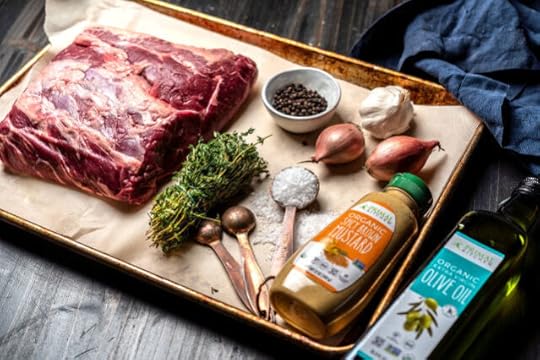
1 pkg ButcherBox Ribeye Roast (approximately 4 lbs.)
¼ cup garlic. minced
¼ cup shallots. minced
¼ cup Primal Kitchen® Organic Spicy Brown Mustard
¼ cup fresh thyme picked and chopped (or 2-3 Tbsp. of dried thyme)
¼ cup Primal Kitchen Organic Extra Virgin Olive Oil
2 Tbsp. kosher salt
1 Tbsp. freshly ground black pepper
Instructions:

Mix all ingredients together and rub over the ribeye roast. Wrap the roast in plastic and refrigerate overnight.
Preheat oven to 225°F. Discarding the plastic wrap, place the roast on a wire rack set over a sheet pan. Season the roast with additional kosher salt and freshly ground black pepper and bring to room temperature (about 30-40 minutes).
Place the roast on the oven center rack and cook for 90 minutes (or until thermometer inserted into thickest part reads 110 ºF).
Remove the roast from the oven and let it rest for at least 30 minutes or up to 2 hours.
About 40 minutes before serving, preheat the oven to 425°F. For medium-rare, cook the roast for 20 more minutes or until a meat thermometer inserted into thickest part reads 125°F.
Let the roast rest again for 20 minutes before slicing. Enjoy!
Serving Suggestion: Serve with our chimichurri sauce for big and bright flavor.
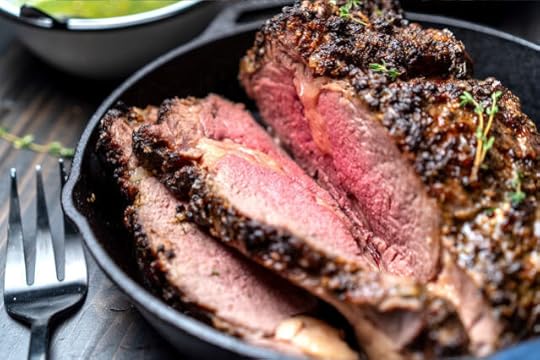
Nutritional Information (per serving):
Calories: 378
Net Carbs: 2.1 grams
Total Carbs: 2.5 grams
Fat: 22.4 grams
Protein: 40 grams
And Now For the Giveaway…
I’ve teamed up with my friends at ButcherBox for a delicious holiday giveaway you don’t want to miss. Imagine heritage breed turkey, juicy ham, ribeye roast, leg of lamb, plus a whole beef tenderloin on your holiday table? Do I have your attention now? To make those meaty dishes even better, I’m throwing in a perfect holiday collection of Primal Kitchen® dressings and marinades, sauces, oils, and more. That’s over $250 worth (per winner) of delicious Primal goodies for your holiday table!
Most of you have heard me talk about ButcherBox before, so you know they’re my favorite source of 100% grass-fed beef, free-range organic chicken, heritage breed pork, and wild-caught Alaskan sockeye salmon. Each month, ButcherBox curates a one-of-a-kind selection of the healthiest, tastiest meats, humanely raised and free of antibiotics and hormones. Their meat is never taken from feedlots. That’s peace of mind and top-notch quality—not to mention excellent eating.
To Enter:
1. Follow @marksdailyapple, @primalkitchenfoods & @butcher_box on Instagram.
2. Enter your email on the giveaway entry page (click here).
I’ll be choosing a total of 4 winners each who will win their very own ButcherBox ($130 value) + $130 in Primal Kitchen products!
Fine Print: Open to U.S only. Must be 18 years or older to win. The winners be announced and contacted on November 21st.
Good luck, everyone!

The post Ribeye Roast + A Huge Holiday Giveaway appeared first on Mark's Daily Apple.



November 11, 2019
My Wife and I Have Never Felt Healthier—or Been—Healthier
It’s Monday, everyone! And that means another Primal Blueprint Real Life Story from a Mark’s Daily Apple reader. If you have your own success story and would like to share it with me and the Mark’s Daily Apple community please contact me here. I’ll continue to publish these each Monday as long as they keep coming in. Thank you for reading!

Yup, success stories are back! And I’m looking for more. Follow-ups, mid-progress reflections—every story at every stage has the potential to inspire folks out there who are getting started or contemplating a new beginning. Contact me here to share your story—long or not so long. You never know who you’ll impact by doing it. Enjoy, everyone!
Hi Mark, I used to be a very unhealthy marketing agency owner. I was overweight as a result of years of poor habits in nutrition, exercise and lifestyle. I drank a little, pretty much every night, ate everything I wanted, but always felt bloated. I snored and suffered sleep apnoea. My skin and stamina were poor, I often felt lethargic. Sometimes my memory would let me down. I was a stereotypically stressed and ‘moody’ businessman and the wrong side of 50.
I regularly listened to podcasts (like Primal Tim Ferriss and Joe Rogan). Occasionally ,one would discuss nutrition, and I started to look at the idea of food differently. Not as an art form, but as something more scientific. More medical and mindful.
I became worried about developing age related illnesses as a consequence of my poor habits. Things like cancer, cardiovascular disease, diabetes and especially dementia.
As a ‘marketing guy’ and a huge sceptic, I also recognised marketing was part of the problem. I understood how I’d been programmed to ignore what my body was saying, and listen to the ‘experts,’ sponsored by or maliciously influenced by the food and pharmaceutical industries.
For years food manufacturers had used marketing and lobbying to re-programme the way we as a society think, feel and believe in food and to economically direct us towards their profitability by changing and normalising behaviours that do not serve our health.
So, I began to listen, read, collect data, analyse and educate myself in order to plan a change.
I found and studied medical research articles on real scientific websites (PubMed) and read a lot of books on the subject.
My wife Jane and I began to change to a primal lifestyle, and have never felt healthier or been healthier.
I even managed to lose 80lbs in the process. Jane lost 40lbs.
The change was so dramatic I found people asking why, how, and to help them to do the same. I could bore people to death for hours on the science and answering questions.
I’m no fitness freak or nutrition nerd. No woowoo wally. At heart I’m a lazy lard arse.
I love eating. But I find so called ‘healthy food’ bland. I like drinking. But alcohol is not nutritious.
I hate exercise. But I want to be healthy and fit without having to follow an exhaustive, time-consuming exercise programme.
Over the hundreds of hours of study and years of self-experimentation, I’ve learned how to look healthy, feel healthy, live healthy and slow-down the ageing process and be physically the best my genes will allow—in the process cutting the risks to the most common causes of death: cancer dementia, diabetes and heart disease in the process.
I want everyone to experience these benefits as well.
I’m so passionate about the benefits that I wanted to share this opportunity with people like me and do it full-time.
So, I trained as a Primal Health Coach and now support the implementation of healthy lifestyle habits for people, especially ones that run businesses and their staff, because I can relate to their challenges.
Especially those that have little time, lots of stress and the same worries I had about ageing, weight gain and living a longer healthy life by preventing illness, and are possibly concerned their bad habits could affect the lives of their children, and their children’s children.
In the picture on the left (December 2016) I was 52. I weighed 260lbs. In the one on the right (July 2019) I’m three years older and I weigh 180lbs.
– Nick E.


The post My Wife and I Have Never Felt Healthier—or Been—Healthier appeared first on Mark's Daily Apple.



My Wife and I Have Never Felt Healthier—or Been Healthier
It’s Monday, everyone! And that means another Primal Blueprint Real Life Story from a Mark’s Daily Apple reader. If you have your own success story and would like to share it with me and the Mark’s Daily Apple community please contact me here. I’ll continue to publish these each Monday as long as they keep coming in. Thank you for reading!

Yup, success stories are back! And I’m looking for more. Follow-ups, mid-progress reflections—every story at every stage has the potential to inspire folks out there who are getting started or contemplating a new beginning. Contact me here to share your story—long or not so long. You never know who you’ll impact by doing it. Enjoy, everyone!
Hi Mark, I used to be a very unhealthy marketing agency owner. I was overweight as a result of years of poor habits in nutrition, exercise and lifestyle. I drank a little, pretty much every night, ate everything I wanted, but always felt bloated. I snored and suffered sleep apnoea. My skin and stamina were poor, I often felt lethargic. Sometimes my memory would let me down. I was a stereotypically stressed and ‘moody’ businessman and the wrong side of 50.
I regularly listened to podcasts (like Primal Tim Ferriss and Joe Rogan). Occasionally ,one would discuss nutrition, and I started to look at the idea of food differently. Not as an art form, but as something more scientific. More medical and mindful.
I became worried about developing age related illnesses as a consequence of my poor habits. Things like cancer, cardiovascular disease, diabetes and especially dementia.
As a ‘marketing guy’ and a huge sceptic, I also recognised marketing was part of the problem. I understood how I’d been programmed to ignore what my body was saying, and listen to the ‘experts,’ sponsored by or maliciously influenced by the food and pharmaceutical industries.
For years food manufacturers had used marketing and lobbying to re-programme the way we as a society think, feel and believe in food and to economically direct us towards their profitability by changing and normalising behaviours that do not serve our health.
So, I began to listen, read, collect data, analyse and educate myself in order to plan a change.
I found and studied medical research articles on real scientific websites (PubMed) and read a lot of books on the subject.
My wife Jane and I began to change to a primal lifestyle, and have never felt healthier or been healthier.
I even managed to lose 80lbs in the process. Jane lost 40lbs.
The change was so dramatic I found people asking why, how, and to help them to do the same. I could bore people to death for hours on the science and answering questions.
I’m no fitness freak or nutrition nerd. No woowoo wally. At heart I’m a lazy lard arse.
I love eating. But I find so called ‘healthy food’ bland. I like drinking. But alcohol is not nutritious.
I hate exercise. But I want to be healthy and fit without having to follow an exhaustive, time-consuming exercise programme.
Over the hundreds of hours of study and years of self-experimentation, I’ve learned how to look healthy, feel healthy, live healthy and slow-down the ageing process and be physically the best my genes will allow—in the process cutting the risks to the most common causes of death: cancer dementia, diabetes and heart disease in the process.
I want everyone to experience these benefits as well.
I’m so passionate about the benefits that I wanted to share this opportunity with people like me and do it full-time.
So, I trained as a Primal Health Coach and now support the implementation of healthy lifestyle habits for people, especially ones that run businesses and their staff, because I can relate to their challenges.
Especially those that have little time, lots of stress and the same worries I had about ageing, weight gain and living a longer healthy life by preventing illness, and are possibly concerned their bad habits could affect the lives of their children, and their children’s children.
In the picture on the left (December 2016) I was 52. I weighed 260lbs. In the one on the right (July 2019) I’m three years older and I weigh 180lbs.
– Nick E.


The post My Wife and I Have Never Felt Healthier—or Been Healthier appeared first on Mark's Daily Apple.



Mark Sisson's Blog
- Mark Sisson's profile
- 199 followers


